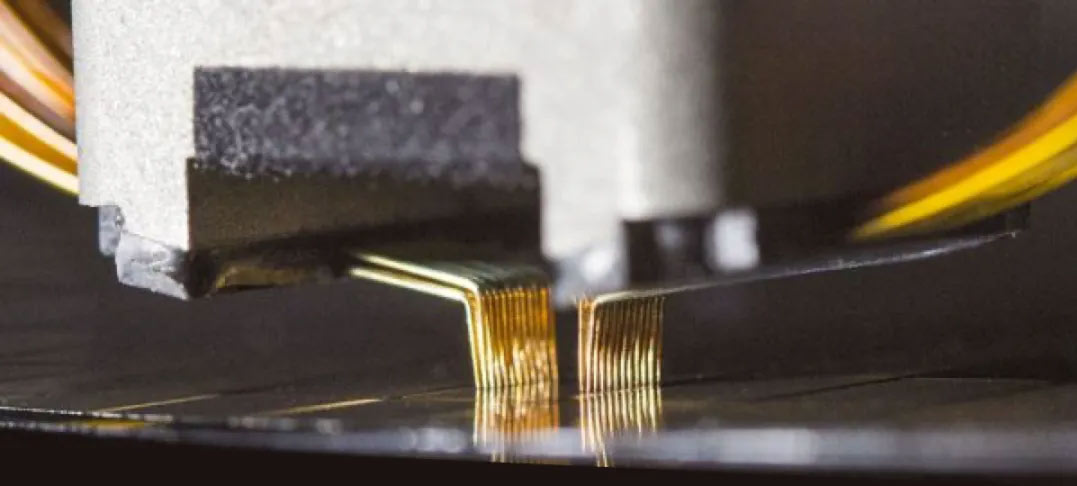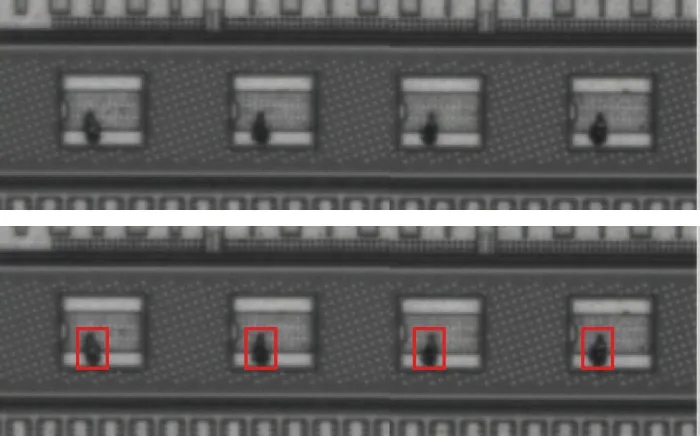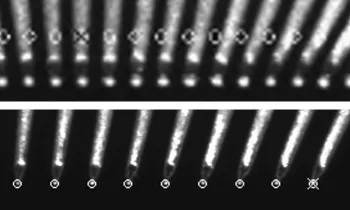Challenges Faced by WAT and Glorysoft's Solutions
In the production process of 6 - inch, 8 - inch, and 12 - inch wafer factories, WAT (Wafer Acceptance Test, wafer acceptance test) is a step where the electrical parameters of specific test structures are measured before the wafer leaves the factory. WAT data is closely related to device physics and is crucial for optimizing device design, improving performance, and solving potential problems. At the same time, WAT data is also closely related to the manufacturing process and can help engineers discover and solve related process problems. Every wafer must undergo a WAT test before leaving the factory. If a wafer has serious process problems that cause the electrical parameters to exceed the specification, it will be screened out and discarded. Therefore, WAT is an indispensable and crucial step in semiconductor manufacturing.
The WAT test is carried out by connecting a probe card to the Test Key (test point) on the wafer scribe line. The probe card has many pins that are connected to the test points, inputting test signals and reading out the corresponding electrical parameters. Due to the variety of products and test points, the corresponding probe cards are also different. Therefore, in actual operation, WAT requires manual operations such as aligning the cross - calibration pattern, calibrating the position of the pins, testing the appropriate pin pressure value, and judging whether the pin marks after puncturing meet the requirements to ensure the accuracy of the test values.

Schematic diagram of WAT puncturing
Such calibration work has a cumbersome operation process, many repetitive operations, a long on - job training period, and inconvenient access to the clean room. Therefore, WAT is one of the steps in wafer production that urgently requires "machine replacement of humans". For such scenarios, Shanghai Glorysoft Software Co., Ltd. (Glorysoft) launched LOFA (Light Off Factory Assistant, black light factory assistant), which has overcome this problem in the real WAT production environment. In a well - known 12 - inch wafer factory in China, after LOFA was launched, it successfully achieved unmanned real - time automatic operation in scenarios such as automatic pin alignment and automatic pin mark detection in the WAT process. Statistical data shows that in the first stage after launch, the number of operators was reduced by 40%, and the overall operation process automation success rate exceeded 90%.
Glorysoft's Application in the WAT Scene
LOFA is a factory intelligent control platform driven by multiple factors, containing centralized control system, virtual robot process automation, knowledge management system, defect image automatic detection, equipment automation system, etc., used to enhance the monitoring efficiency of the control room. In the WAT scene, the target machines are Prober and Tester machines.

For pin mark detection
Original situation: LOFA recognition result

For automatic pin alignment
Original situation: LOFA alignment result
In the WAT scene, artificial intelligence image recognition technologies such as text recognition, target detection, position detection, and template matching are applied to solve problems that require more manual intervention in the process, such as adjusting the height of the needle, automatic pin alignment, pin mark detection, and interface character recognition. Finally, through automatic operation and AI image recognition transformation, the full - process automation of the machine running process is achieved, significantly reducing manpower and improving production efficiency, and reducing the MO operation of the production line.
Advantages of LOFA
Compared with Similar Products
When LOFA remotely operates a machine, the delay is usually more than 50ms. LOFA adopts a better software - hardware combination solution to control the delay within 30ms. The RPA process editing uses a code - based method and requires knowledge of code to edit, with a high difficulty of getting started. LOFA process editing uses a low - code flowchart method, only requires the arrangement and combination of process modules, has a low learning cost, and is convenient for engineers to customize requirements.
It cannot be linked with other systems in the FAB. It can be connected with systems such as MES and AMHS to obtain various information about the lot and interact with virtual robot process automation, thus achieving full - process automation. The success rate of RPA automatically executing the entire process is relatively low, generally below 60% in WAT. LOFA adds advanced visual recognition algorithms and process management techniques, and the automation success rate is above 90%.
Benefits of LOFA to the Factory
Human - Machine Ratio
LOFA can automate the entire running process of the machine and automatically solve some common problems. Operators and engineers only need to solve abnormal issues, using fewer people to manage more machines.
Machine Efficiency
LOFA can monitor all machines in real - time, actively discover and handle machine problems, shorten the response time of personnel and the time to resume machine operation. LOFA does not require software installation on the machine end, which can avoid abnormal shutdowns caused by an increase in the machine CPU load.
Product Yield
The automatic processing process of LOFA significantly reduces the MO risk, and LOFA reduces the particles brought by personnel entering and leaving the production line.
Feedback from LOFA's Wafer Customers
Feedback from the Workshop Leader on LOFA
After LOFA was launched, not only the number of operators was reduced, but also the training of new employees became easier. Only the training of abnormal handling and other issues needs to be concentrated, and overall, LOFA effectively helped us save labor input and training costs.
Feedback from WAT Operators on LOFA
1.Before, the manual operation workload was large and it was easy to get tired. After LOFA was launched, the operator no longer needed to spend energy on handling repetitive work, and the overall work efficiency was improved.
2.At first, when using automatic operation, I was not confident, but after using it for a long time, I found that the accuracy of the operation was high and it could successfully replace humans.
3. After running for one year in WAT, LOFA has become a part of the production SOP. The training and operation methods of personnel have also changed and become stable. New employees cannot operate without LOFA in hand.
Application Outlook of LOFA in WAT
Through the accumulation and sorting of the automation process, LOFA will gradually form an SOP management system convenient for customer training, and through the analysis of the execution efficiency of each step of different recipes, find points that can be optimized to help customers optimize the recipe. LOFA can also combine pin mark detection and the diameter of the pin, and the judgment of the length of the pin alarm to assist customers in judging the condition of the pin card, thus further improving the efficiency of the machine and making the management of the pin card more efficient.
Glorysoft will continue to upgrade LOFA to make it more intelligent, digital, and scenario - based, and integrate it into various production stages of advanced manufacturing, empowering advanced manufacturing enterprises and leading the best practice of intelligent production AI, and finally realizing the vision of a black light factory.












